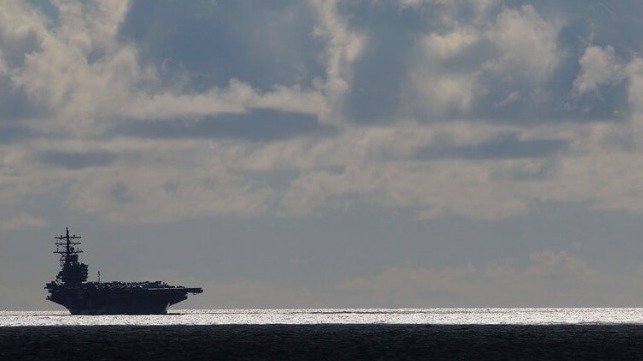Philippines Bolsters Defenses in Strategic Luzon Strait

As China pushes its unique sovereignty claims in the Philippine sector of the South China Sea, the Philippine military is upgrading defenses in another area of strategic interest to China - the Luzon Strait, just south of Taiwan.
In a visit to the Philippines' Batanes Islands, which sit in the middle of the strait, Philippine Defense Secretary Gilberto Teodoro said that the region is the "spearhead of the Philippines as far as the northern baseline is concerned," and that its garrison would be strengthened. The Philippine Navy described the announcement as a "pivotal" shift for the nation's defense posture.
The Luzon Strait is a choke point for access between the South China Sea and the Philippine Sea, and China's navy uses it to move carrier strike groups and destroyers out to the open Pacific. Access to the strait is necessary for Chinese interests in the event of a Taiwan Strait conflict: The PLA Navy could use it to threaten Taiwan's eastern shores or to maintain a cordon around the island. Conversely, the strait would be a key access point to the Taiwan Strait and South China Sea for American and allied forces.
Gilberto's announcement of plans to reinforce Batanes is the latest development in an extended back-and-forth between Manila and Beijing. China claims a large swath of the Philippine EEZ as its own, despite an arbitral court ruling in the Philippines' favor in 2016. Chinese forces regularly harass Philippine servicemembers and fishermen in the Spratly Islands, and the People's Liberation Army has turned a string of reefs in the region into strategic airbases, complete with air defenses and military-grade runways.
In January, Teodoro said that the Armed Forces of the Philippines would work to assure "unimpeded" access for Philippine fishermen to operate in the South China Sea, despite Chinese pressure. "We are evolving into a defense concept which projects our power into our areas where we must protect and preserve our resources," he said.
China is also leaning into greater confrontation. This week, a senior researcher at a Chinese think tank said that it was time for China to "show our swords" and defend its unrecognized maritime claims.
Wu Shicun, chairman of the Huayang Centre for Maritime Cooperation and Ocean Governance, wrote that "long-term peace and stability in the South China Sea cannot be achieved only by China's unilateral restraint."
"We will take timely action against any stirring up of trouble . . . and dare to show our swords when necessary," Wu said in the piece, published in the nationalist state-owned outlet Global Times.
